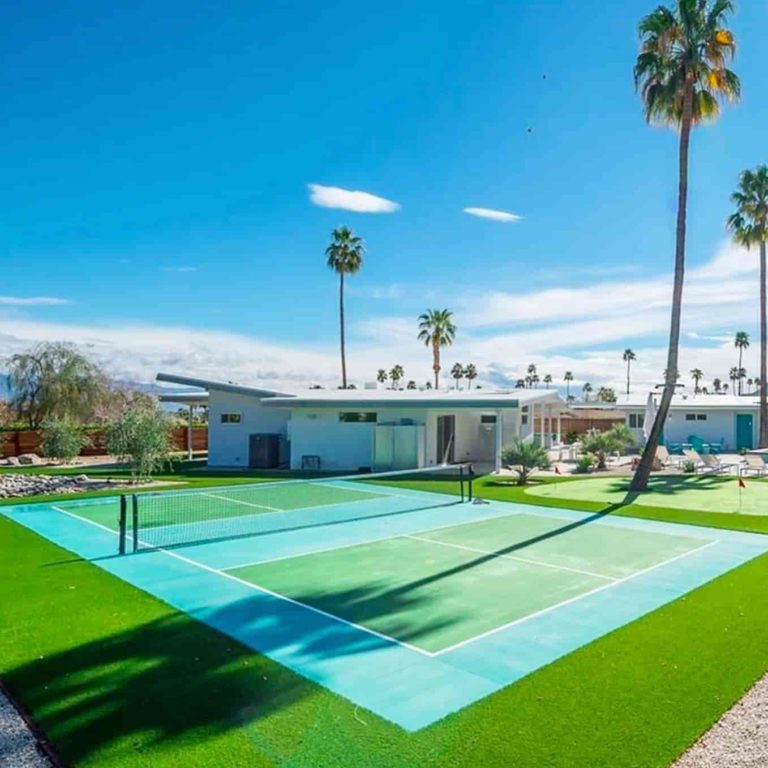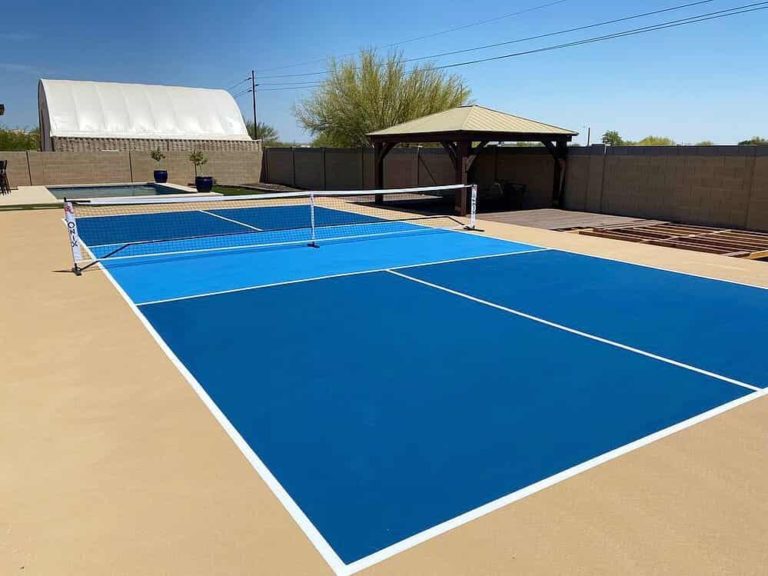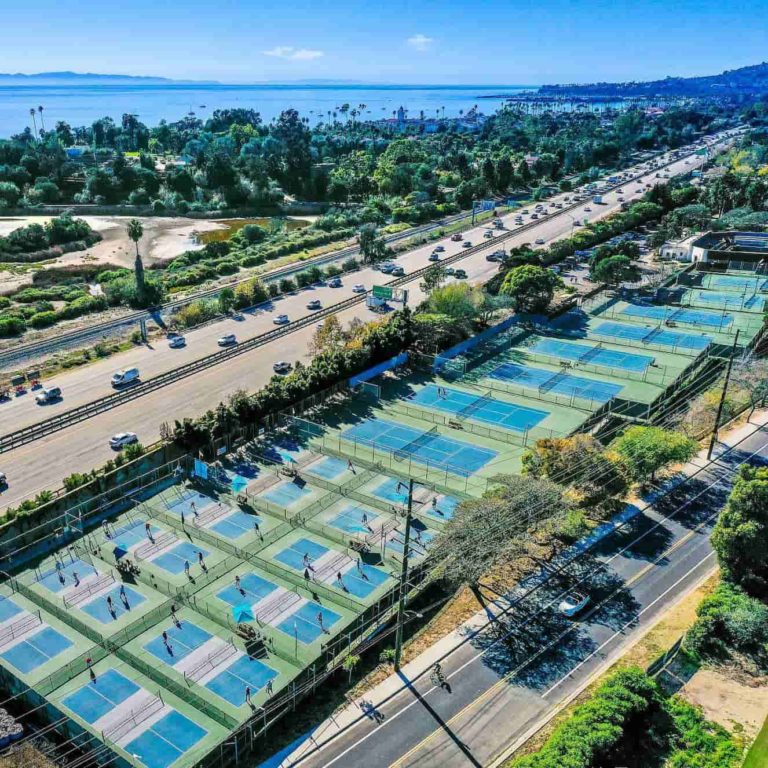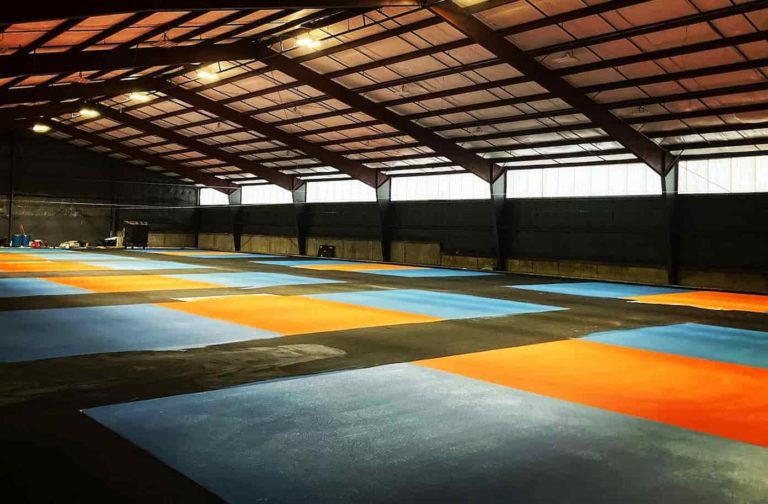Introduction
Pickleball is one of the fastest-growing sports in the United States. Invented in 1965, it has quickly gained popularity among players of all ages, becoming a favorite pastime among seniors and young ones alike.
Pickleball combines elements of tennis, badminton, and ping pong to create a fun and highly addictive game that can be played both indoors and outdoors. While pickleball courts are becoming more common across the country, there is still a significant shortage of dedicated pickleball courts.
This is where tennis courts come into play. By converting underutilized or unused tennis courts into pickleball courts, communities can provide more opportunities for residents to engage in this exciting sport.
Explanation of the Popularity of Pickleball
The popularity of pickleball stems from its accessibility and ease-of-play. Unlike tennis, which can require years of practice to master, pickleball is easy to learn and pick up quickly. The rules are simple, and the court dimensions are much smaller than those for tennis.
Another reason for its rising popularity is that it caters to all age groups. It’s not uncommon to see grandparents playing with their grandchildren on a pickleball court or seniors engaging in friendly competition with other players at their local community center.
It’s incredibly fun! Players often become hooked after just one game because they find themselves laughing and having great fun during play.
The Need to Convert Tennis courts into Pickleball Courts
Tennis courts can be easily converted into high-quality pickleball courts without major expenses or alterations. Communities around the country face an increasing demand for accessible spaces where residents can play pickleball safely without having to pay high fees or travel long distances.
The conversion of unused tennis courts is an excellent solution to address this need. Additionally, since the conversion process does not require significant resources and can be completed relatively quickly, it’s a cost-effective way to create more pickleball courts without breaking the bank.
Overview of Pickleball and Tennis
Pickleball and tennis are two of the most popular racquet sports in the world. While tennis has been around for centuries, pickleball is a relatively new addition to the scene.
Both sports require similar skills such as hand-eye coordination, agility, and stamina. However, there are many differences between the two sports that make them unique in their own ways.
Brief History and Rules of Tennis
Tennis originated in England during the 19th century. It was initially called “lawn tennis” because it was played on grass courts by members of the upper class.
Over time, it became more accessible to people from all walks of life, and today it is one of the most popular sports in the world. The rules of tennis are fairly simple.
Two or four players hit a ball back and forth over a net using racquets. The ball must land within certain boundaries on opposite sides of the court, and players can score points by making their opponents miss or hit out-of-bounds shots.
Brief History and Rules of Pickleball
Pickleball was invented in 1965 by three dads looking for a fun activity for their kids to play during summer vacation. The game quickly grew in popularity among adults as well due to its simplicity and low-impact nature. In pickleball, two or four players use paddles to hit a lightweight ball over a net that is lower than a tennis net.
The court dimensions are smaller than those used in tennis which makes it easier for beginners or seniors to play without much strain on their joints. The game starts with an underhand serve that must land within specific boundaries on opposite sides of the court.
Points are scored when one team fails to return the ball over the net or hits it out-of-bounds. The first team to score 11 points and be ahead by at least two points wins the game.
Overall, both tennis and pickleball have their unique characteristics which make them enjoyable to players of all ages. While tennis is more widely known, pickleball’s popularity is rapidly growing due to its accessibility and fun gameplay.
Differences Between Pickleball and Tennis courts
Size Differences: Why Size Matters in Court Sports
One of the most important differences between tennis and pickleball courts is their size. Tennis courts are much longer and wider than pickleball courts, with dimensions of 78 feet in length by 27 feet in width for singles matches, and 78 feet in length by 36 feet in width for doubles matches. In comparison, pickleball courts measure only 44 feet in length by 20 feet wide for doubles matches, whereas the singles court is even narrower at only 17 feet wide.
The smaller size of pickleball courts makes them ideal for players who may not have the speed or agility to cover a larger area quickly. Conversely, tennis requires more movement around a larger court, making it ideal for players who have good endurance and can cover a lot of ground.
Surface Material Differences: The Importance of Choosing the Right Court Surface
Another key difference between tennis and pickleball courts is the surface material used. Traditional tennis courts are typically made from concrete or asphalt surfaces covered with a layer of acrylic paint.
This surface provides good traction on shoes while still allowing players to slide during rallies. On the other hand, pickleball can be played on various surfaces such as concrete, wood or even indoor carpeting.
However, most players prefer playing on specific materials that provide better grip on shoes to prevent falls while still allowing easy movements across the court. Regardless of which type of court you play on- it’s important to choose one that won’t cause injury or prevent you from playing your best game.
Net Height Differences
One final difference between tennis and pickleball courts is where their net heights are set at. In tennis, net height sits at exactly three feet in the middle and higher on the side. Conversely, pickleball nets are set at a lower height of 36 inches in the center of the court.
The lower net height makes it easier for players to perform overhead shots and serves without having to worry about hitting the net. This difference in net height is an important aspect when converting a tennis court into a pickleball court, as installing a new net at the correct height is crucial for gameplay.
Steps to Convert a Tennis Court into a Pickleball Court
Measure the Court Dimensions
The first step in converting a tennis court into a pickleball court is to measure the dimensions of the existing court. Pickleball courts are considerably smaller than tennis courts, so it’s important to get accurate measurements to ensure that the new lines are painted correctly. A standard pickleball court measures 20 feet wide and 44 feet long, which is roughly one-third of the size of a standard tennis court.
Remove the Tennis Net and Posts
Once you have measured the dimensions of your existing tennis court, it’s time to remove the tennis net and posts. The easiest way to remove these items is with a wrench or pliers. Be sure to carefully remove all parts of the net and posts from their anchors in order to avoid damaging them or leaving unsightly marks on your newly converted pickleball court.
Install a New Net at the Correct Height for Pickleball
Now that you have removed all traces of your old tennis net and posts, it’s time to install a new net at the correct height for pickleball. The standard height for a pickleball net is 36 inches at each end, which is slightly lower than a traditional tennis net. If you’re using an adjustable-height portable net system, be sure to adjust it accordingly before securing it in place.
Paint New Lines for Pickleball Court Dimensions
The final step in converting your tennis court into a pickleball court is painting new lines according to pickleball regulations. The boundaries of each half-court should be marked with sideline boundaries that measure 22 feet from each sideline on either side of the centerline.
Additionally, there should be two service boxes on each side measuring 10 feet by 20 feet with service line markings located 7 feet from the net. Be sure to use official pickleball court paint and stencils to ensure that your lines are crisp and accurate.
Overall, converting a tennis court into a pickleball court is a relatively simple process that can be accomplished with the right tools and a bit of effort. By following these steps, you can create a brand new pickleball court that will provide hours of fun and exercise for you, your friends, and family.
Materials Needed for Conversion
Portable or Permanent Net System
The net system is an essential material needed to convert a tennis court into a pickleball court. When converting a tennis court, the net should be lowered to 36 inches, which is the correct height for pickleball. Two types of nets are available in the market: portable and permanent.
Portable nets are lightweight and easy to move around, making them ideal for temporary conversions or smaller spaces. However, permanent nets are more durable and require less maintenance, making them an ideal choice for long-term conversions.
Paint and Stencils for New Court Lines
Painting new lines on the surface of the tennis court is another crucial step in converting it into a pickleball court. The dimensions of the two courts differ; hence new lines need to be painted over existing ones. Stencils make painting easier by ensuring precision and accuracy while reducing errors during painting.
Additional Considerations
Cost Comparison Between Building a New Court Vs Conversion
Converting a tennis court into a pickleball court is generally less expensive than building one from scratch. Estimates indicate that conversion costs depend on various factors such as materials used, labor costs, and additional accessories like lighting features. Compared to starting from scratch, conversion costs can cut down approximately 30-40% of total expenses.
Maintenance Requirements for Converted Courts
Maintenance of converted courts involves regular checks on safety issues such as cracks on concrete surfaces or loose equipment like nets that may pose hazards during games. It is also essential to maintain proper surface traction using non-slip coatings or resurfacing materials when necessary.
Conclusion
Converting tennis courts into pickleball courts has become necessary due to the increasing popularity of this sport worldwide. While the conversion process may seem daunting, it is relatively simple and cost-effective compared to building a new court from scratch. With the right materials and guidelines, tennis courts can be transformed into fully functional pickleball courts with ease, providing an excellent opportunity for more people to engage in this exciting sport.






